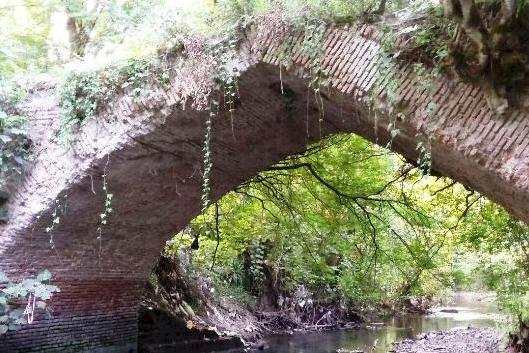Ancient arch bridges in Gilan undergo restoration

TEHRAN – Restoration work has commenced on five centuries-old arch bridges in Gilan province, northern Iran.
Various sections of the bridges including their decks, pillars, and foundations, will be restored and reinforced under the supervision of cultural heritage experts, the province’s tourism chief said on Saturday.
In addition, worn-out bricks or slabs will be replaced with the same original ones, the official noted.
An arch bridge carries loads primarily by compression, which exerts on the foundation both vertical and horizontal forces. Arch foundations must therefore prevent both vertical settling and horizontal sliding. Despite the more complicated foundation design, the structure itself normally requires less material than a beam bridge of the same span.
Arch bridges can be classified into deck arch bridges (featuring arches below the deck) and through arch bridges (those with arches above the deck, generally tied arches). In all arch bridges, the structural difficulty can be found in the minimization of the misalignment of the arch axis and the line of thrust, as well as a sufficient bending and buckling resistance. General design recommendations focus principally on the arch-to-span ratio, the arch and deck slenderness, and the number of hangers or piers.
Recent innovative arch bridges include high-speed railway (HSR) bridges, concrete-filled steel tubular and precast concrete arches, high-performance concrete or ultra-high performance concrete arches, and steel-concrete composite arches, and feature innovative erection methods. Recent research has been dedicated to the shape and magnitude of equivalent geometric imperfections, fatigue detailing, erection methods, reduction of the arch's self-weight, and new materials for arches, hangers, and ties.
Gilan is well-known for its rich Iron Age cemeteries such as Marlik that have been excavated over the past century. It was once within the sphere of influence of the successive Achaemenian, Seleucid, Parthian, and Sassanid empires that ruled Iran until the 7th century CE. The subsequent Arab conquest of Iran led to the rise of many local dynasties, and Gilan acquired an independent status that continued until 1567. Sophisticated Rasht, the capital of Gilan province, has long been a weekend escape for residents of Tehran who are looking to sample the famous local cuisine and hoping for some pluvial action – it's the largest and wettest town in the northern region. Gilan is divided into a coastal plain including the large delta of Sefid Rud and adjacent parts of the Alborz mountain range.
AM
Leave a Comment